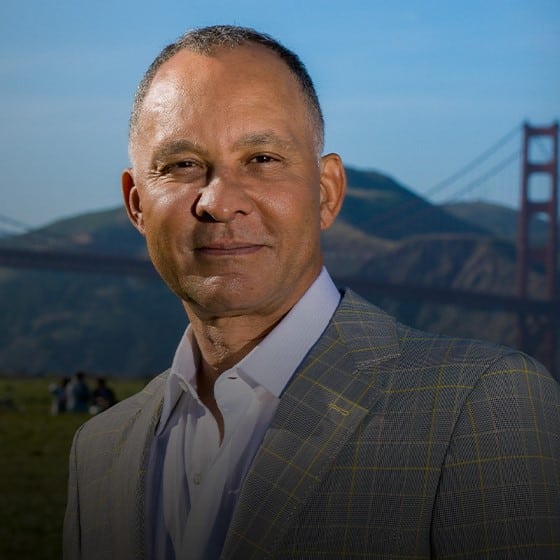Puffy Nipples and Gynecomastia: The Causes and Effective Treatments From California’s Top Gynecomastia Expert
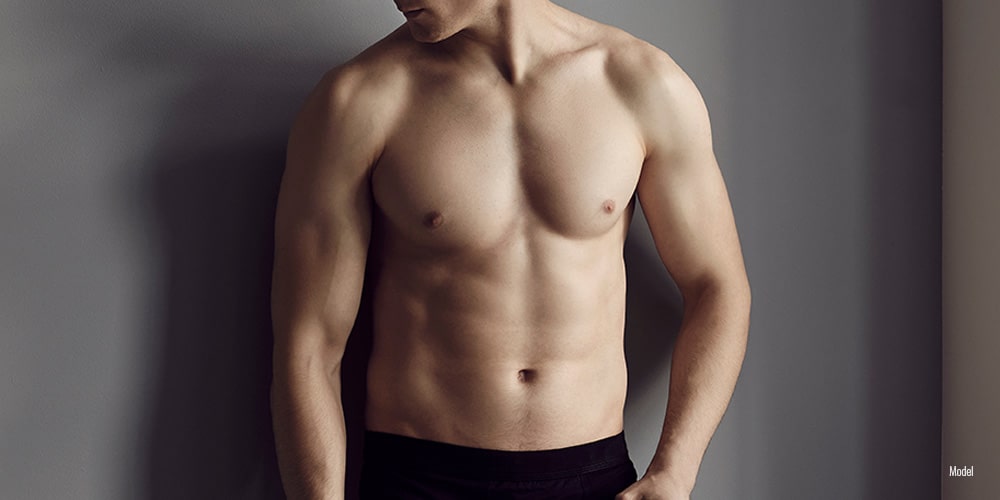
Puffy nipples and gynecomastia can cause noticeable changes in men’s chest appearance. Puffy nipples result from extra fat, while gynecomastia involves enlarged breast tissue caused by hormones. Knowing the difference helps choose treatments. This article covers the causes, symptoms, and cures for both, including how to correct puffy nipples.
What to Know About Gynecomastia and Puffy Nipples
- Puffy nipples and gynecomastia are distinct conditions often linked to hormonal changes, excess body fat, or genetic factors, requiring different treatment approaches.
- Non-surgical treatments include lifestyle changes, exercise, diet modifications, and compression garments, while surgical options like gynecomastia surgery and liposuction offer permanent solutions.
- Consultation with a qualified expert, such as Dr. Miguel Delgado, is vital for personalized assessment and treatment planning for puffy nipples and gynecomastia.
Understanding Puffy Nipples and Gynecomastia

The condition of puffy nipples is characterized by a noticeable protrusion and expansion of the nipple and surrounding areola, leading to an appearance that can be described as swollen or lacking in definition. This could stem from various reasons, such as shifts in hormonal levels or increased body fat. Conversely, gynecomastia signifies the growth of male breast tissue due specifically to surplus glandular tissue found under the nipple area, often accompanied by rigid nodules and potential discomfort or sensitivity.
It’s critical to differentiate between simple puffy nipples caused primarily by chest fat accumulation versus genuine gynecomastia, which involves increased glandular breast tissue, when diagnosing these conditions for accurate treatment. By conducting a clinical assessment, healthcare professionals like Dr. Delgado can identify whether they are dealing with excess fatty deposits on the chest or excessive development of glandular tissue beneath the skin. In cases of gynecomastia, surgical options may involve the removal of excess tissue to enhance chest appearance and achieve specific aesthetic goals through nipple reduction surgery. Various methods to get rid of puffy nipples include surgical options like nipple reduction and gynecomastia surgery, as well as non-surgical alternatives such as liposuction and lifestyle changes.
While symptoms such as enlarged nipples and additional glandular tissue beneath them indicate gynecomastia, often accompanied by breast tenderness, puffiness localized solely around the nipples may suggest the presence of accumulated fat tissue without the expansion of glandular structures. Identifying such distinctions is crucial before embarking on appropriate therapeutic intervention pathways for each scenario.
What Are Puffy Nipples?
Puffy nipples are a condition in which the nipple and surrounding areola appear swollen or enlarged, giving the area a puffy or protruding appearance. The accumulation of excess fatty tissue or increased breast tissue beneath the nipple often causes this condition. Unlike gynecomastia, which involves the growth of glandular breast tissue, excess fat primarily characterizes puffy nipples.
Puffy nipples can affect men of all ages and are often linked to hormonal imbalances, weight gain, or genetic factors. Hormonal changes during puberty can lead to temporary puffiness in the nipple area, which can resolve over time, generally about two years. In adults, factors such as excess body fat, certain medications, and steroid use can contribute to the development of puffy nipples.
Understanding the nature of puffy nipples is crucial for determining the appropriate treatment. While they may be cosmetic, they can also indicate underlying health issues that must be addressed. The following sections will explore the symptoms, diagnosis, and treatment options for puffy nipples.
Causes of Puffy Nipples in Men
Hormonal imbalances and weight gain are the primary factors contributing to puffy nipples in men. Hormonal imbalances may occur during particular life stages, such as puberty or as one ages, leading to a rise in estrogen levels, which can cause the nipples to become puffy. Steroids and some medications might also have undesired side effects, resulting in puffy breasts.
Genetic predisposition is another factor. A family history of gynecomastia—changes in breast tissue—increases the chances that an individual will encounter similar issues with breast appearance. Identifying these underlying causes makes it easier to determine appropriate interventions to fix puffy nipples and diminish their swollen appearance, whether through surgical options like nipple reduction and gynecomastia surgery or non-surgical alternatives such as lifestyle changes.
Hormonal Imbalance and Puffy Nipples
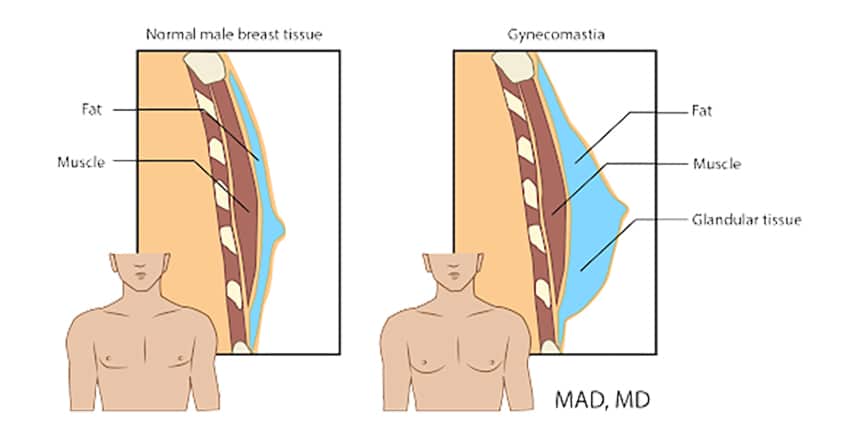
Puffiness in the nipples often becomes apparent when hormone levels are disturbed. This may happen due to various events, such as adolescence, puberty, and particular medical issues that trigger these hormonal alterations. If it’s determined this imbalance is behind the condition, hormone therapy could help mitigate puffy nipples. Should hormone levels become steady again following treatment, puffiness will typically decrease.
Understanding hormones’ influence on puffy nipples is essential for their effective management. The forthcoming segments will explore more closely which specific hormones play a part and examine how medications and steroids might affect hormone concentrations. Additionally, we will discuss various methods to treat puffy nipples, including targeted exercises, dietary changes, and potential surgical options, while highlighting the importance of consulting a doctor, such as Dr. Delgado, for personalized treatment plans.
Role of Estrogen and Testosterone
Elevated estrogen levels, which can occur during specific periods of life, may lead to puffy nipples. The condition is often aggravated in men due to genetic predispositions or as a side effect of certain medications that increase estrogen levels. The crux of this development lies in the disruption of estrogen-to-testosterone equilibrium.
The use of anabolic steroids to boost testosterone can ironically lead to enhanced estrogen levels that contribute to puffy nipples. This hormonal fluctuation triggered by steroid intake has the potential for lasting effects, disturbing hormonal balance indefinitely. It is vital to control these hormonal shifts if one wishes to alleviate puffy nipples.
Impact of Medications and Steroids
Medications designed to treat prostate conditions or other medical issues can alter hormonal balances and lead to puffy breasts. Men may experience puffy nipples due to these changes in hormone levels, especially when anabolic steroids are involved, as they are well-documented for their role in disrupting hormonal equilibrium.
The use of certain medications and anabolic steroids has been linked to altered normal hormone levels, leading not only to puffy nipples, but also to gynecomastia. Should you be on any such medication that could potentially impact your hormone levels, it is advisable to seek guidance from a healthcare professional who can discuss potential alternative treatments or solutions with you.
Certain medications and recreational drugs can increase prolactin hormone levels, causing the nipples to become more pronounced.
Genetic Factors Leading to Excess Glandular Tissue
The tendency to develop puffy nipples and gynecomastia is significantly influenced by genetics, with a strong family history of gynecomastia increasing the likelihood of experiencing similar changes in breast tissue. The impact of genetics becomes particularly evident during adolescence, which is marked by intense hormonal fluctuations.
Genetic disorders like Klinefelter syndrome can lead to atypical growth of male breast tissue. Knowing your familial health history helps pinpoint the root causes for puffy nipples and pursue suitable interventions.
Weight Gain and Puffy Nipples
Men often experience puffy nipples due to weight gain, which increases chest fat and can accentuate puffiness. Being overweight or suffering from obesity puts additional stress on the skin around the breast area, contributing to this swollen appearance. The more body mass a man has, the greater his display of prominent puffy nipples.
Adopting a diet low in fat may help combat increased estrogen production tied to accumulated body fat. Embracing healthier living habits and maintaining consistent weight control are instrumental in lessening nipple prominence while improving overall chest shape.
Symptoms and Diagnosis
Puffy nipples can be identified by a swollen or enlarged appearance of the nipple and/or areola area. The symptoms can vary in severity and may be accompanied by other signs, such as tenderness, redness, or discharge. In some cases, puffy nipples may be a normal variation in breast anatomy, while in other cases, they can be a symptom of an underlying medical condition.
Diagnosing puffy nipples typically involves a physical examination by a healthcare professional, who will assess the appearance and texture of the nipple and areola area. They may also ask questions about your medical history, including any previous breast problems or hormonal imbalances. In some cases, imaging tests such as mammograms or ultrasounds may be ordered to rule out any underlying breast tissue abnormalities.
It’s essential to seek medical attention if you experience any of the following symptoms:
- Persistent or severe nipple swelling
- Nipple discharge or bleeding
- Redness or tenderness of the nipple or areola area
- Changes in the shape or size of the nipple or areola area
- A lump or thickening in the breast tissue
Early diagnosis and treatment can help alleviate symptoms and address any underlying conditions contributing to puffy nipples. Understanding the symptoms and seeking timely medical advice can lead to more effective management and treatment of this condition.
Non-surgical Treatments for Puffy Nipples
Men seeking to alleviate puffy nipples can explore non-surgical treatment methods. Implementing lifestyle modifications, including shedding excess weight through physical activity, curtailing alcohol consumption, and stress management, may help address and eliminate puffy nipples. These changes can significantly help reduce puffy nipples. Adhering to a well-rounded diet loaded with lean proteins while reducing estrogenic foods can also greatly benefit the condition.
Focusing exercise routines on strengthening the pectoral muscles might reduce the prominence of puffy nipples. Alternative therapies like laser or radiofrequency treatments present options for enhancing the appearance of puffy nipples without resorting to surgical procedures. These strategies offer viable solutions for managing this issue non-invasively. Non-surgical methods can help eliminate puffy nipples by addressing the underlying causes and promoting chest health.
Diet Changes

Maintaining a nutritious diet is essential in decreasing body fat and alleviating puffy nipples. A nourishing diet with healthy fats, antioxidants, lean proteins, and fiber can help diminish puffiness. Foods that boost testosterone include ginger, garlic, and cruciferous vegetables like broccoli and cauliflower. Men who experience elevated estrogen levels might benefit from steering clear of foods high in this hormone, like soy products, flaxseeds, and some legumes.
Changing one’s diet can reduce estrogen concentrations and body fat, enhancing conditions related to puffy nipples. Embracing a well-rounded diet coupled with moderate or reduced alcohol consumption can have a notable effect on hormonal fluctuations and bolster overall wellness.
Exercise to Reduce Excess Fatty Tissue

Exercise can help fortify the muscles beneath the breasts but won’t shrink puffiness in the tissue. Engaging in activities like push-ups, overhead presses, dips, and swimming is suggested to reinforce pectoral muscles. Other exercises available for bolstering your pecs include bench presses, utilizing chest press machines, performing additional push-ups, and executing dumbbell flies. Aim to do one 20-minute chest workout two to three times a week to help reduce the appearance of puffy nipples.
Focusing on lower pectoral workouts through incline exercises may enhance the contour of your chest and diminish the prominence of puffy nipples. It is wise to seek advice from a healthcare professional before initiating any new exercise regimen.
Compression Garments
Compressing garments temporarily remedy concealing puffy nipples beneath one’s attire. These items are crafted to cling tightly to the body, minimizing the prominence of puffy nipples in the chest area.
Although they do not provide a lasting solution, these garments can enhance self-assurance and ease during social interactions.
Surgical Options for Treating Puffy Nipples and Breast Tissue Removal
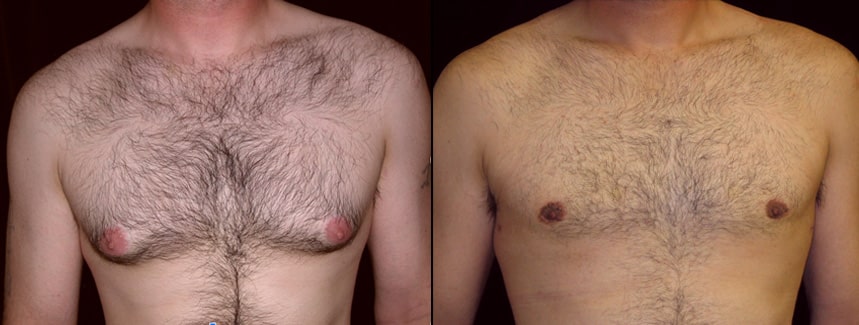
Men suffering from puffy nipples can opt for surgical treatments, such as male breast reduction, gynecomastia surgery, or nipple reduction surgery, to address the issue. These operations are designed to eliminate excess glandular and breast tissue, offering a long-lasting remedy for puffy nipples. Undergoing gynecomastia surgery not only enhances the masculine appearance of the chest but also boosts self-confidence and minimizes any associated discomfort.
For those seeking a less invasive method with elastic skin, liposuction is an alternative that removes surplus fat in the chest region for men with pseudogynecomastia. Both plastic surgery and gynecomastia procedures offer lasting results, ensuring that patients can eliminate puffy nipples and achieve a flatter chest, thereby reducing their prominence.
Nipple reduction surgery is usually performed under local anesthesia and is relatively quick. In some young men, the nipple itself can protrude to an embarrassing degree.
Male Breast Reduction Surgery
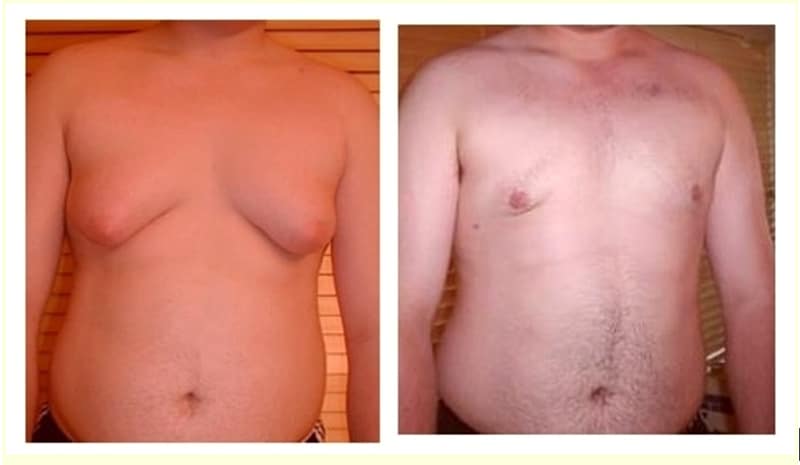
During the procedure to reduce puffy nipples, Dr. Delgado will make an incision around the lower half of the areola, remove any excess tissue, and then close the incisions with stitches. A drain is inserted, and a compression garment is fitted. To address severe gynecomastia—a condition characterized by an enlargement in male breast tissue and skin excess—a mastectomy is employed as a surgical solution.
To conclusively alleviate symptoms associated with this condition, male patients often need breast reduction surgery since pharmaceutical remedies are predominantly ineffective.
The primary aim of surgical intervention for gynecomastia is to extract additional glandular material located under swollen nipples. This procedure flattens the nipple area and chest contour more broadly. Dr. Delgado is known for his expertise in conducting gynecomastia surgeries that yield high patient satisfaction and successful treatment results.
Liposuction
Liposuction is a medical procedure that extracts surplus fat cells and fatty tissue from specific body parts, notably around the chest. Individuals with high skin elasticity tend to be more suitable for this surgery because their skin is likely to contract better following the fat extraction.
To qualify for liposuction, patients should be close to their target weight but may have concentrated areas of excess fat resistant to diet and exercise routines. The results can offer a more sculpted look in the area surrounding the chest, enhancing self-esteem in individuals dealing with issues such as puffy nipples or gynecomastia.
The ideal candidates for liposuction are individuals with pseudogynecomastia, characterized by chest fullness or puffy nipples due to fat accumulation or being overweight.
Recovery From Gynecomastia Surgery
After surgery, patients can expect some temporary stiffness and discomfort. Dr. Delgado recommends patients begin taking gentle walks shortly after their procedure. A compression garment is critical to reduce post-operative swelling. Individuals may return to their usual activities just days after the operation.
Nevertheless, vigorous exercise should be postponed for at least four to six weeks after surgery. The complete resolution of swelling and full recovery might take several weeks. Elevating oneself during sleep is advised, as this helps diminish swelling throughout the recuperation phase.
Consulting with your surgeon is highly recommended for advice and assistance regarding your recovery journey.
Consult with Dr. Delgado, Gynecomastia Expert

With over three decades of specialized experience, Dr. Miguel Delgado is a leading expert in gynecomastia surgery. A consultation with him offers an extensive evaluation and conversation about specific concerns regarding gynecomastia, enabling the formulation of a custom-tailored treatment strategy. His renowned expertise draws patients from far-flung locations to seek his services, leading to high levels of satisfaction among patients and consistently successful surgical outcomes.
Dr. Delgado’s gynecomastia practice includes numerous revision surgeries for patients dissatisfied with results from previous procedures elsewhere, which accounts for 40% of his practice.
When it comes to addressing issues such as puffy nipples, consulting an authority like Dr. Delgado can instill both clarity and confidence in prospective patients. He is committed to providing individualized care that aligns closely with each patient’s expectations, ensuring they achieve their desired results from the procedure.
Puffy Nipples and Gynecomastia Relief in San Francisco
Puffy nipples and gynecomastia can significantly affect a man’s confidence and sense of well-being. Identifying the root causes, which range from hormonal imbalances to hereditary predispositions and weight increases, is essential for finding suitable treatment methods. Various therapeutic options, including non-invasive procedures and surgery, offer advantages and factors to consider.
Seek advice from Dr. Delgado, and he can create a tailored treatment strategy to yield optimal results. Call us at (415) 989-2221 or complete our online form to schedule your free consultation today.
Frequently Asked Questions About Gynecomastia
What is the most common treatment for gynecomastia?
The most common treatment for gynecomastia is male breast reduction surgery, which effectively removes excess breast tissue when medications are ineffective. This surgical intervention provides a permanent solution to the condition.
Can non-surgical procedures help reduce gynecomastia symptoms?
Yes, non-surgical fat removal techniques can effectively reduce gynecomastia symptoms caused by fat accumulation. However, they won’t address glandular tissue.
Consulting a healthcare professional to determine the appropriate approach is essential.
What are some symptoms of gynecomastia?
Common symptoms of gynecomastia are enlarged nipples, breast pain or tenderness, and excess glandular tissue beneath the nipple.
If you notice these symptoms, it may be advisable to consult a healthcare professional for further evaluation.
How common is gynecomastia among men?
Gynecomastia is common, with estimates suggesting that up to 70% of men may experience it at some stage in their lives.
Can puffy nipples go away over time?
Yes, puffy nipples can fade over time, especially if they are due to hormonal fluctuations during puberty. If they remain a concern, surgical options may be considered.
What is the cost of gynecomastia surgery caused by puffy nipples?
The cost of gynecomastia surgery, specifically for addressing puffy nipples, can vary widely based on several factors. These factors include the surgeon’s expertise, the complexity of the procedure, geographical location, and the specific techniques employed during surgery. Typically, the cost ranges from $3,000 to $10,000, with some high-end procedures possibly exceeding this range.
It’s important to note that this surgery often involves more than just removing excess glandular tissue. Surgeons may also sculpt the chest area to achieve a more natural contour, which can affect the cost. Additionally, fees may include anesthesia, facility costs, and post-operative care.
Insurance coverage for gynecomastia surgery can be limited, as it is often considered a cosmetic procedure. However, some insurance plans may cover part of the cost in medically necessary cases, such as significant discomfort or psychological distress. Patients should consult their insurance providers to understand their coverage options.
Consulting with an experienced surgeon like Dr. Delgado, who specializes in gynecomastia surgery, can provide a clearer understanding of potential costs and expected outcomes. Patients are encouraged to discuss all financial aspects during their consultation to ensure they are fully informed before the surgery.
Are gynecomastia surgery results permanent?
The results of gynecomastia surgery are typically permanent but can be affected by weight gain or certain medical conditions. Surgery often provides a more permanent solution for puffy nipples compared to non-surgical options.
